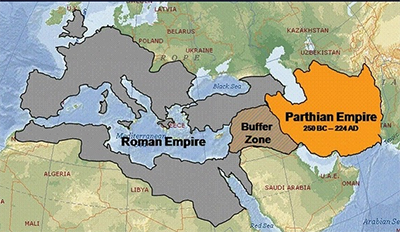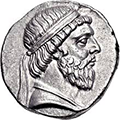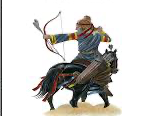The Parthian Empire
The Parthian Empire was a major opponent of Rome for four centuries in ancient times. 
What became the Parthian Empire was once part of the Persian Empire, which Alexander the Great conquered. In the wake of his death, his surviving generals divided up his empire and a series of Seleucid kings ruled Parthia. An enterprising satrap named Andragoras took advantage of a change in leadership in 245 B.C. and led a revolt, taking over part of the satrapy. A few years later, another uprising resulted in the founding of the Parthian Empire, with the first king being Arsaces I, whose brother, Tiridates, had led the later revolt. The first capital of the new empire was at Hecatompylus. 
The ascension to the throne of King Mithradates I in 171 B.C. ushered in the first golden age of Parthia. No relation to the similarly named kings who ruled Pontus, Mithradates conquered Bactria in the east, then Media in the west, and then the ancient power the Elamites. After adding Babylonia and Seleucia (the Seleucid capital) to his repertoire, Mithradates settled down to govern. The capital of the empire moved to Nisa and then to Ctesiphon, where it stayed. The leaders of the empire wanted to be referred as "King of Kings," as had been Cyrus the Great and other Persian rulers. This empire, however, was far less centralized, 
Rome wasn't most enemies, of course, and Roman armies soon came into conflict with the equally expansionist Parthia. Roman legions led by Crassus met with humiliating defeat at the Battle of Carrhae in 53 B.C., with Crassus himself being seized and executed in a particularly horrible way. Fortune swung the Parthians' way again in 39 B.C., when they seized control of much of the Middle East with the exception of Tyre. Three years later, Marc Antony set out to avenge Crassus and invaded Mesopotamia. The attack force got bogged down and didn't achieve what it set out to do. When Augustus became emperor, he focused on the west, sending his son-in-law, the future emperor Tiberiuis to settle a peace with the Parthian leader Phraates in 20 B.C. That fragile peace lasted for a few decades and Roman emperors, as Parthian leaders focused on expanding their holdings to the east. Rome and Parthia sparred again over Armenia, as both sides wanted a different ruler on the throne of that buffer kingdom. After Rome invaded Armenia to enforce its choice of king, the two powers again worked out an agreement, avoiding full-scale war. The eventual conflict occurred, however, in 114, when the Roman emperor Trajan, incensed at the Parthian king Vologases III's deposition of the Armenian leader, invaded Parthia. Along the way, Rome conquered Armenia and then marched into Parthia, taking city after city. In 116, the Romans captured the Parthian capital, Ctesiphon, and laid down the law. The one thing that Rome had more of was infantry; even though Parthian forces were particularly good at routing other armies in the field, they didn't have a lot of manpower on the ground who could take over a city wholesale and hold it for a considerable length of time. What worked better for the Parthians was to exert control initially and then step back and let cities run themselves, as had been the case from the beginning of the empire and the arrangements with the first vassal kings. This approach certainly paid dividends when trade along the Royal Road and the Silk Road brought much money into Parthian coffers. Rome became occupied with matters in the west again, and Parthian agitators saw a favorable opportunity in 161, taking back Armenia. The Roman counterattack succeeded in retaking both Armenia and Ctesiphon and all of Mesopotamia. Rome held sway for another three decades until, in the midst of yet another civil war, had to fight back against yet another Parthian uprising. Septimius Severus, the emperor who finally restored order to Rome, attacked Parthia, and Roman armies took Ctesiphon for good in 198. The vassal kings soldiered on, and one saw an opportunity in 224. The Persian king Ardasir revolted and, in 226, seized Ctesiphon. The Parthian Empire was at an end, displaced by what became the Sasanian Empire. |
|
Social Studies for Kids
copyright 2002–2026
David White



 with local power devolving to a number of local vassal kings and a defense force in the form of local garrisons rather than a standing imperial army. When these garrisons did fight together, they were a feared opponent, facing down enemies with a combination of devastating cavalry charges and deadly bowmen that could convince most enemies to surrender. The Parthian mounted archers were particularly adept at appearing to retreat and then firing over their shoulder with deadly accuracy. This gave rise to the term "Parthian shot," which became "parting shot."
with local power devolving to a number of local vassal kings and a defense force in the form of local garrisons rather than a standing imperial army. When these garrisons did fight together, they were a feared opponent, facing down enemies with a combination of devastating cavalry charges and deadly bowmen that could convince most enemies to surrender. The Parthian mounted archers were particularly adept at appearing to retreat and then firing over their shoulder with deadly accuracy. This gave rise to the term "Parthian shot," which became "parting shot."
